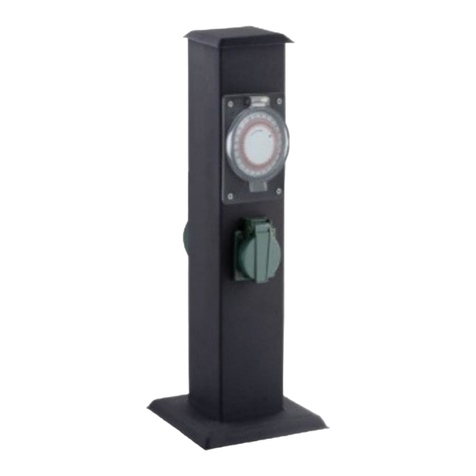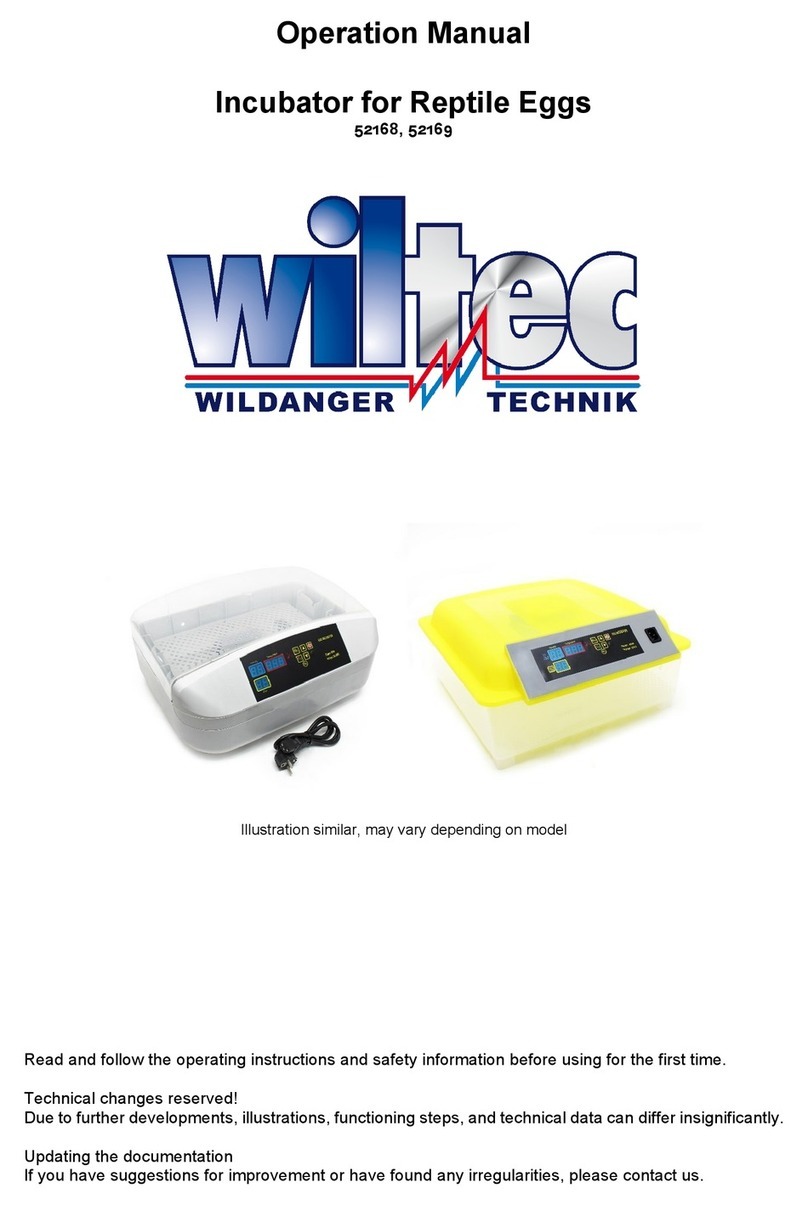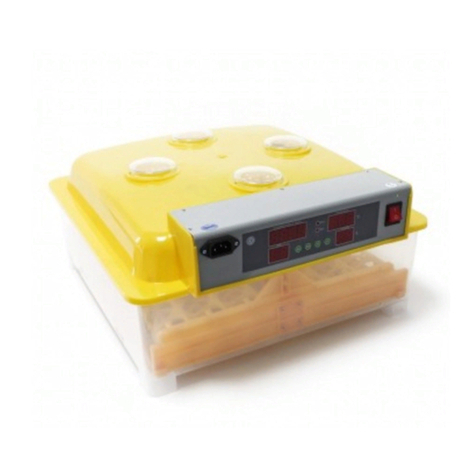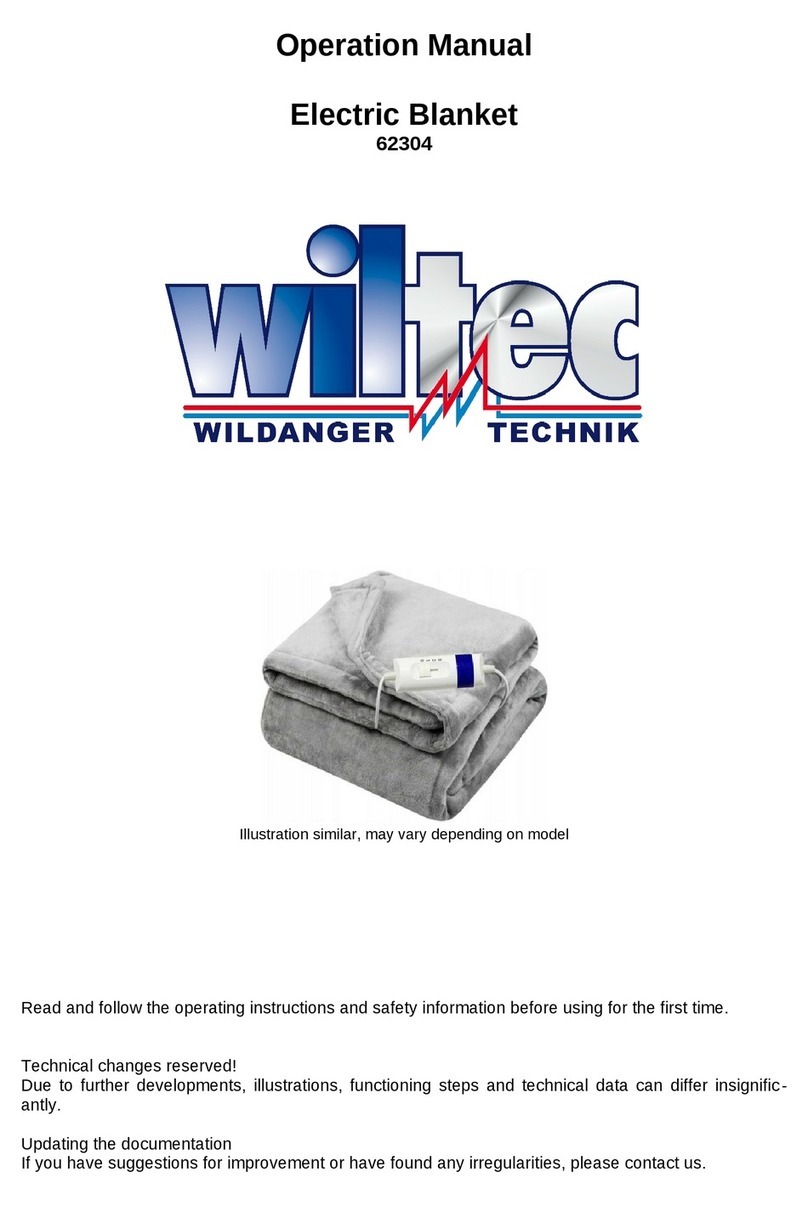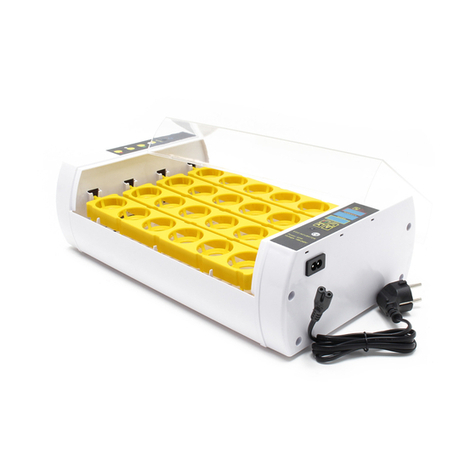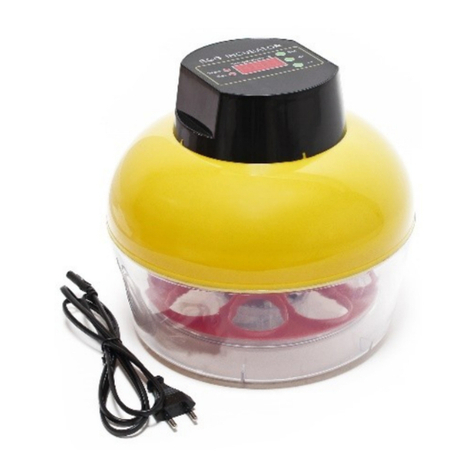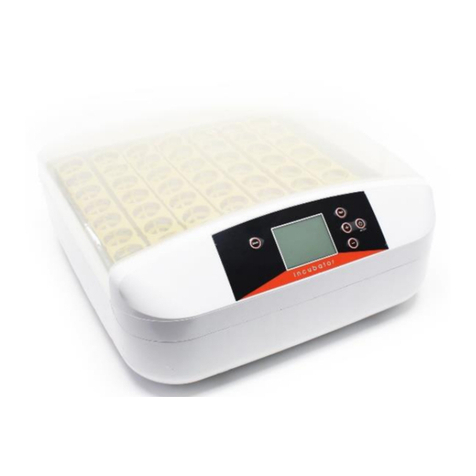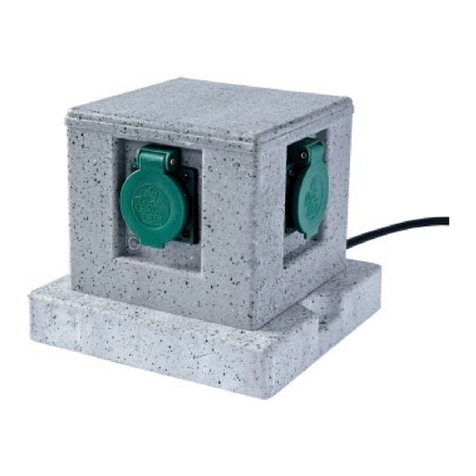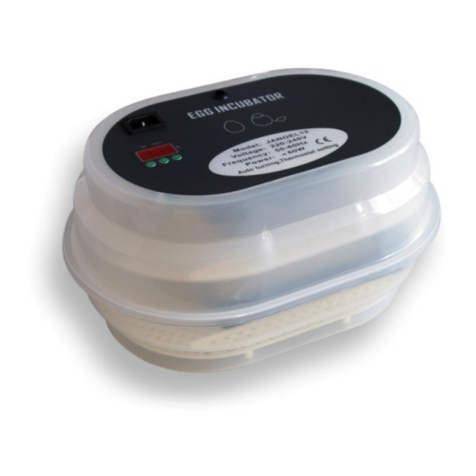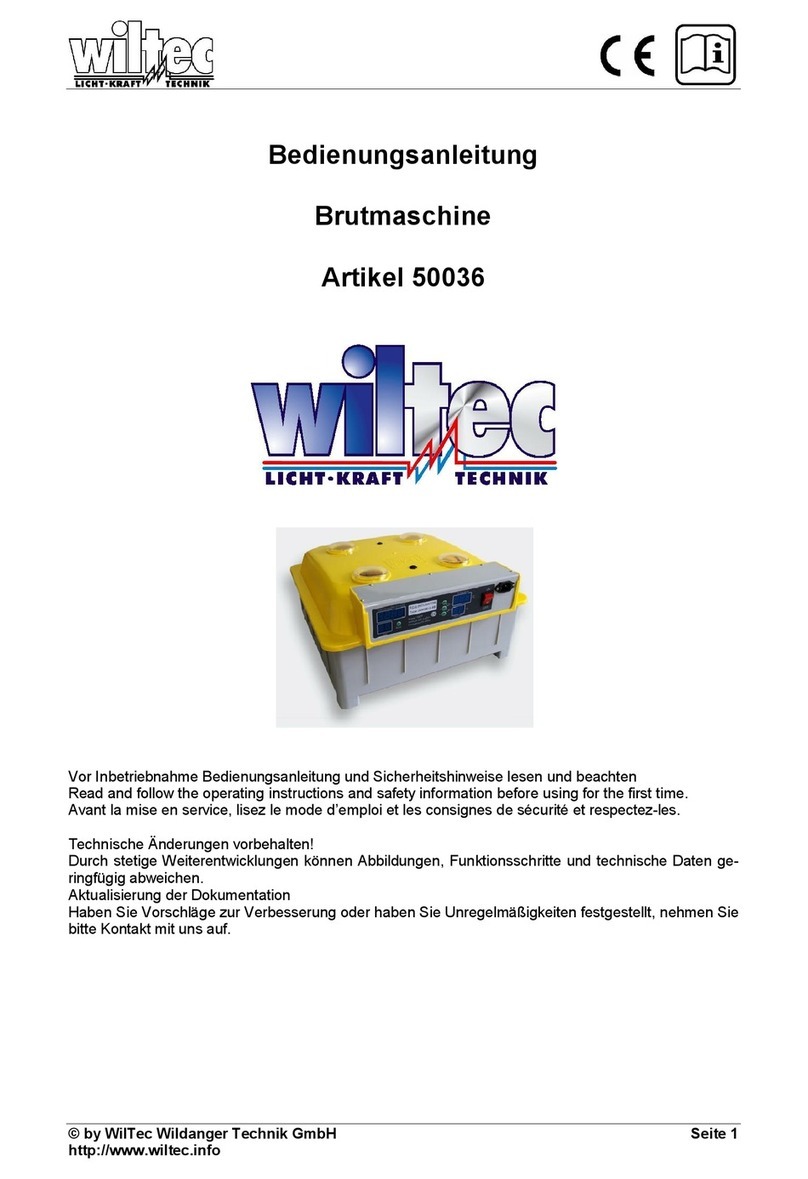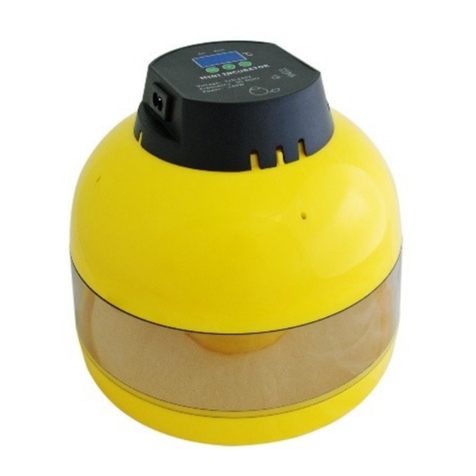© by WilTec Wildanger Technik GmbH Item 52016 Page 6
http://www.WilTec.de
http://www.aoyue.eu 10 2021-1
http://www.teichtip.de
Basic functions
1. Press “SET”(5) and “+”(6) while the incubator is not supplied with energy to restore the factory
settings (turning interval: every 2 h during 10 s).
2. Press the LED switch (2) during 3 s to test the egg turning function. By pressing the up and
down buttons (6, 7), the turning interval can be adjusted.
Temperature adjustment
The factory temperature setting is 38 ℃(100 °F). The temperature can be adapted to different types of
clutches and ambient temperature. Should the incubator not have reached 38 ℃(100 °F) even after
several hours of operation, check the following:
1. Has the temperature been set to 38 ℃(100 °F)?
2. Does the fan work properly?
3. Is the lid closed?
4. Is the ambient temperature above 18 ℃(64.4 °F)?
To check and modify the temperature settings, proceed as follows:
1. Press the “SET”button (5) once.
2. Press “+”(6) or “–” (7) to adjust the desired temperature.
3. Press “SET”(5) to complete the adjustment.
Adjustments of temperature alarm value (AL and AH)
The alarm value is set to 1 ℃(33.8 °F) in the factory.
Adjustment of alarm when temperature is too low (AL)
1. Press the “SET”button (5) during 3 s.
2. Press the “SET”button (5) repeatedly until “AL”is displayed.
3. Press “+”(6) or “–” (7) to define the desired temperature alarm value.
Adjustment of alarm when temperature is too high (AH)
1. Press the “SET”button (5) during 3 s.
2. Press the “SET”button (5) repeatedly until “AH”is displayed.
3. Press “+”(6) or “–” (7) to define the desired temperature alarm value.
Adjustment of upper and lower temperature limit (HS and LS)
With the upper limit set to for example 38.2 ℃(100.8 °F) and the lower limit to 37.4 ℃(99.3 °F), the
temperature of the incubator can only be adjusted to a value comprised between these two limits.
Calibrating the temperature sensor
The thermometer is set to 0 ℃(32 °F) in the factory. In case the temperature display has deviating
values, you can adjust the temperature sensor. Use a standardised external thermometer to determine
the correct temperature values. The deviation between the temperature display and the external ther-
mometer is the value to be set.
1. Press the “SET”button (5) during 3 s.
2. Press the “SET”button (5) repeatedly until “CAU”is displayed.
3. Press “+”(6) or “–” (7) to define the desired value.
